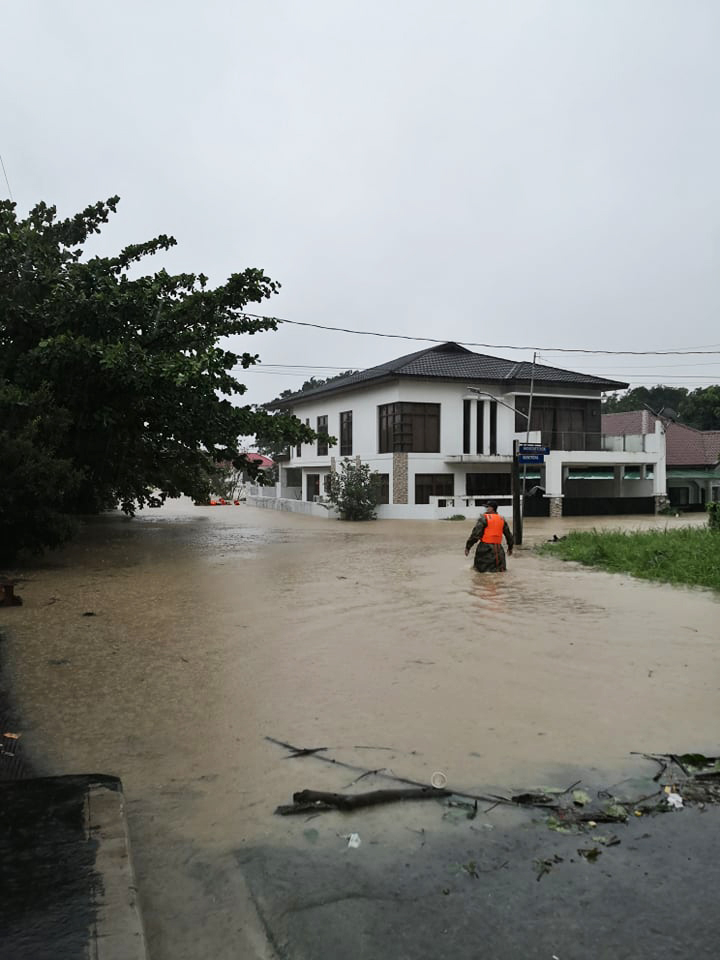Our city at risk
Floodwaters have been a constant part of life in Manila for as long as I can remember. Rain boots were a closet staple for my family and I growing up, and we used to cut up plastic bottles and turn them into boats to float down the flooded street.
In college, my car stalled a number of times in the flood, so my classmates and I would instead spend the night in UST every time España flooded. My first office was along Araneta Avenue, where floodwaters would almost reach the second floor and my team would be stranded for a couple of days at times.
Over the years, much has been said about the threats of climate change and the need to protect our planet and plant more trees. There is an obvious need for more structural infrastructure, like dams and spillways to address our overflowing rivers. Permeable surfaces must be implemented and a stronger disaster response program is necessary.
I’d like to share a few ideas that can be implemented immediately to help us prepare for the next few years, as typhoons of increasing risk and severity come our way. While long term structural programs are put in place, we must promote actionable, yet non-structural measures that can provide immediate relief.
Community-based response
We need to develop community-based flood mitigation programs that empower local communities to act upon the needs of their own. These programs can better identify and address local concerns and create solutions that may escape centrally planned programs. This bottom-up approach can be facilitated with education and training programs centered around our barangays.
The first step is to identify and assess the communities that are most at risk. Floods can endanger lives, damage property or hinder mobility. Information can be better received and understood when it is delivered locally by well-informed and trained community leaders. Proper safety protocols and escape routes can be better communicated with constant dissemination of relevant literature.
We should provide local communities with basic boating equipment and first aid training at very little cost. The availability of equipment locally and within reach of the community can reduce the reliance on communication infrastructure that regularly gets cut during these typhoons. This also empowers the community and serves as visible reminders of the need for earlier evacuation to locally available disaster shelters.
Training for at-risk communities should include leadership and organizational training, waste management, search and rescue, and public health training. The biggest threats of floodwaters are diseases that can come after the flooding. Organizational support should not be overlooked nor delivered only when disaster strikes, but rather throughout the whole year to better strengthen local resilience.
Vertical housing
We must actively discourage sprawl and encourage a smaller urban footprint by developing building policies that encourage more vertical housing. Metro Manila is growing faster than the reach of our emergency response infrastructure and it is usually the outer districts that get hit the hardest. Aside from the simple fact that vertical housing is safer from immediate risk, it also eats up less space not just in terms of the building footprint, but also the accompanying road infrastructure.
We must reduce or at least slow down the continuous development of more land in farther and riskier locations like floodplains, mountain sides or coastal communities. The safety and security of vertical housing both during and after disasters must be better understood and applied. Existing communities can be redeveloped to include more permeable parks and reduce concrete surfaces. We can build more robust and less vulnerable communities that are elevated and less isolated.
It is disheartening to think that years and years after, we are still facing the same problems without being able to come up with better solutions. The two typhoons that hit our country this past week has shown how inadequate our structural and soft flood mitigation infrastructure are. While we have no control over climate, we can and should be better prepared for the annual onslaught of the typhoon season.
Resilient together
Resiliency is much better when tempered with knowledge and preparation. Our communities need all the help we can give. I’m sharing these programs led by Prim Paypon for the benefit of affected communities in Marikina and Bicol.
“Bayong of Hope for Marikina” is for the benefit of the sapateros and bagmakers communities under Stride Collective, who were severely affected by Typhoon Ulysses. At P1,500, each Bayong of Hope includes five kilos of rice, 10 cans of sardines, 10 cans of corned beef, one dozen hot chocolate drink sachets, one dozen cup noodles, one can of biscuit, face masks, a bottle of alcohol, three bar soaps, a flash light, batteries, candles, four pairs of slippers, pre-loved clothes (if available), and one bayong handcrafted by a community of weavers in Luisiana, Laguna. For donations, you may send it through Prim Paypon via BPI (3219172981) or GCash (0917 882 8299). Once deposited, kindly forward deposit slip to Prim (0917 727 1675) for proper documentation and monitoring.
#BayanihanBicol is meanwhile for the benefit of Bicolano farmers severely affected by Typhoon Rolly. #BayanihanBicol is a relief drive organized by agri-tech startups Mayani and Agrabah Ventures, BTS Army Bayanihan, Verdecalle, and the Asian Institute of Management-Dado Banatao Incubator to provide our Bicolano farmers and their families with food packs and seeds so they can bounce back and recover from the massive damage brought by Typhoon Rolly to their lives and livelihood. For donations, visit https://cutt.ly/BayanihanBICOL.



